Dr. Todd Bolen uses his experience in Israel – and his camera lens – to bless others with glimpses of the biblical world.
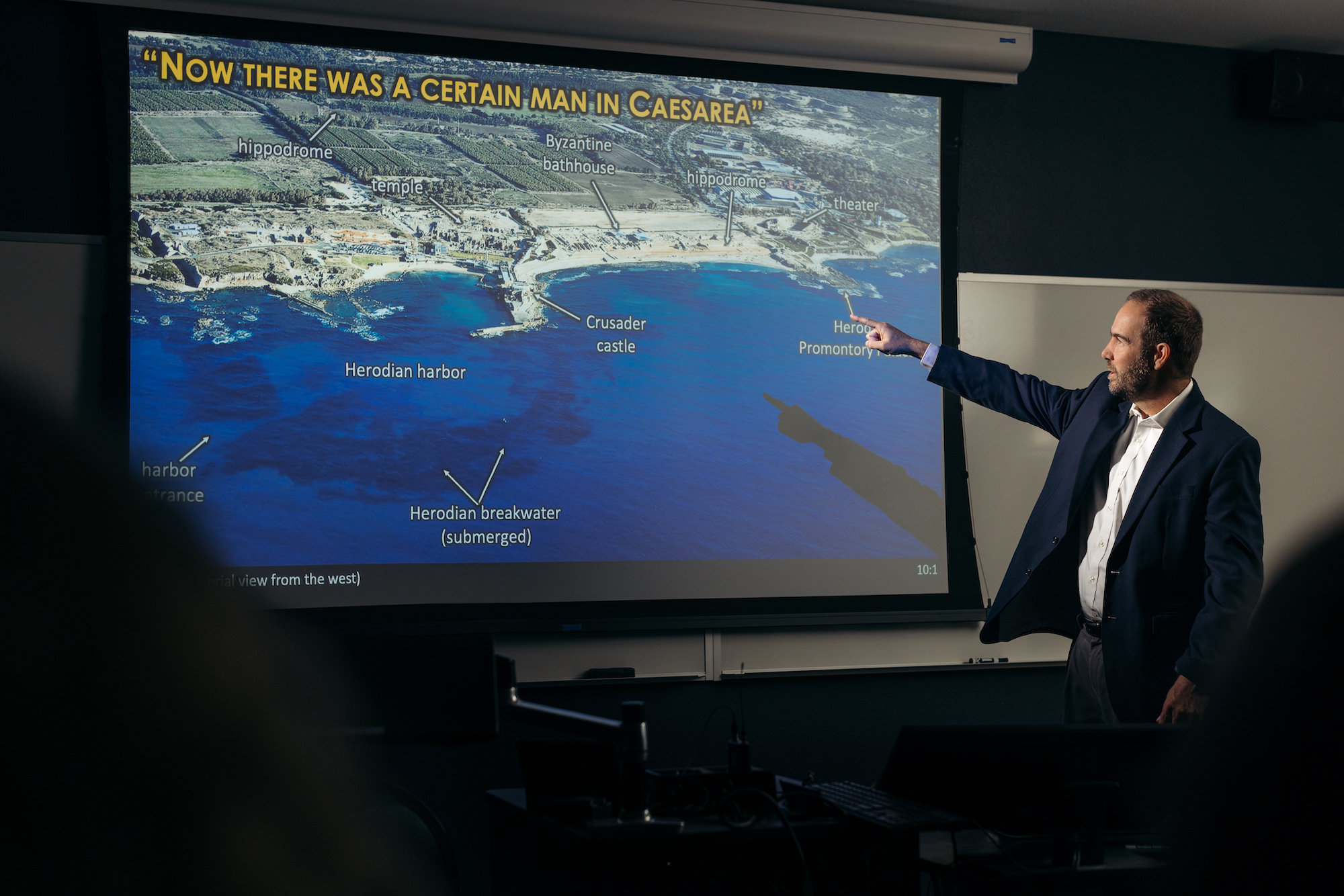
Dr. Todd Bolen’s interest in photography came early. He bought his first camera in sixth grade with money he earned on a paper route.
His love for Israel, however, came much later. And it wasn’t until he was living and teaching there as a professor at The Master’s University’s Israel Bible Extension (IBEX) program that these two interests united. But in the years since, the combination has borne tremendous fruit.
Bolen may have ultimately left IBEX behind to teach at TMU’s main campus, but he continues a ministry of opening the world of the Bible to his students — and people across the globe — through his website, BiblePlaces.com. For many people, his photos and expertise are the best glimpse they have of the Promised Land.
* * *
When Bolen came to TMU in 1989 as an undergraduate youth ministry major, neither Israel nor college teaching were anywhere on his radar. But that was before he spent a semester abroad, studying at the Institute of Holy Land Studies in Jerusalem.
There, everything changed.
“Going to Israel opened my eyes,” Bolen says. “When you’re there, you’re living in the Bible. You’re experiencing it, and it comes to life. As soon as I got back, I was looking for a way to get back and live in Israel.”
And it wasn’t just that. His experience in Israel made him realize he wanted to be a college professor more than he wanted to be a pastor.
Most importantly of all: He met a girl named Kelli who was studying at the Institute from another American college.
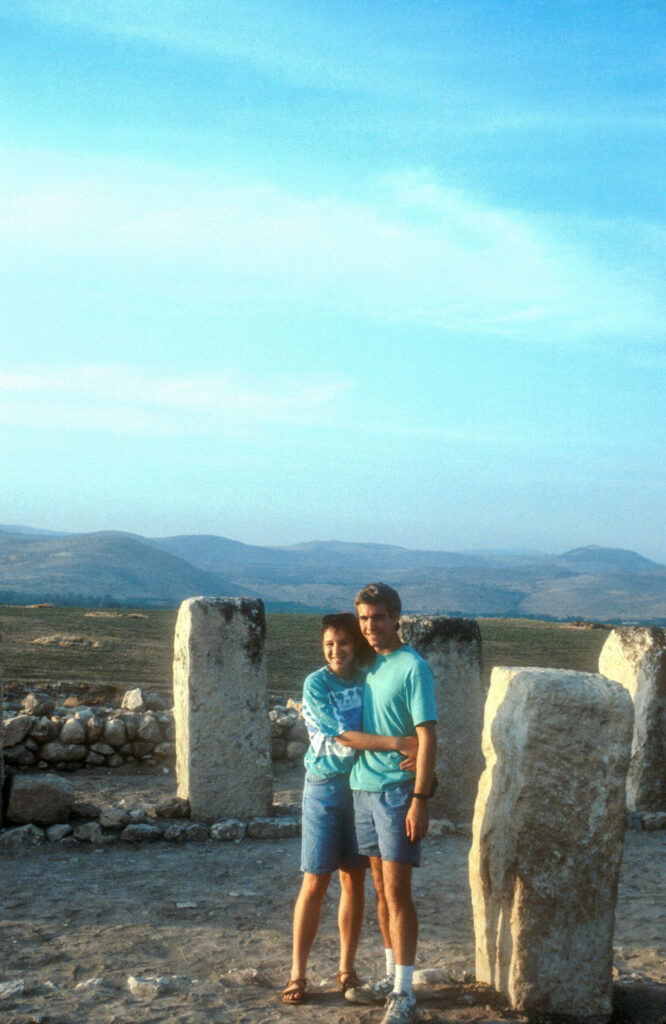
Todd and Kelli Bolen at Hazor in 1992 — back in Israel for graduate studies.
The two of them soon had an opportunity to return to Israel. After graduating in 1992, Todd married Kelli and came back to the Institute to work toward a graduate degree. During that time, plans began to form at what was then The Master’s College for an extension campus in Israel. When IBEX launched a few years later, Todd was one of the founding faculty members.
On top of teaching classes, Bolen was also responsible for student life at IBEX. One of the projects that fell under his purview was the program’s website, where he uploaded photos he took during field trips throughout the country. In the time before social media, this was one of the few ways that a student’s family and friends received updates.
Soon, though, Bolen was also shooting photos with an educational purpose in mind.
“I had a desire to take photos for use in the classroom — even while I was teaching students who were living in Israel and could look out the window at it,” Bolen says. Photos helped jog memories, fill in holes and introduce his students to sites they hadn’t yet seen. “When I was looking through the viewfinder on the camera, I was always thinking, ‘How do I use this for teaching?’”
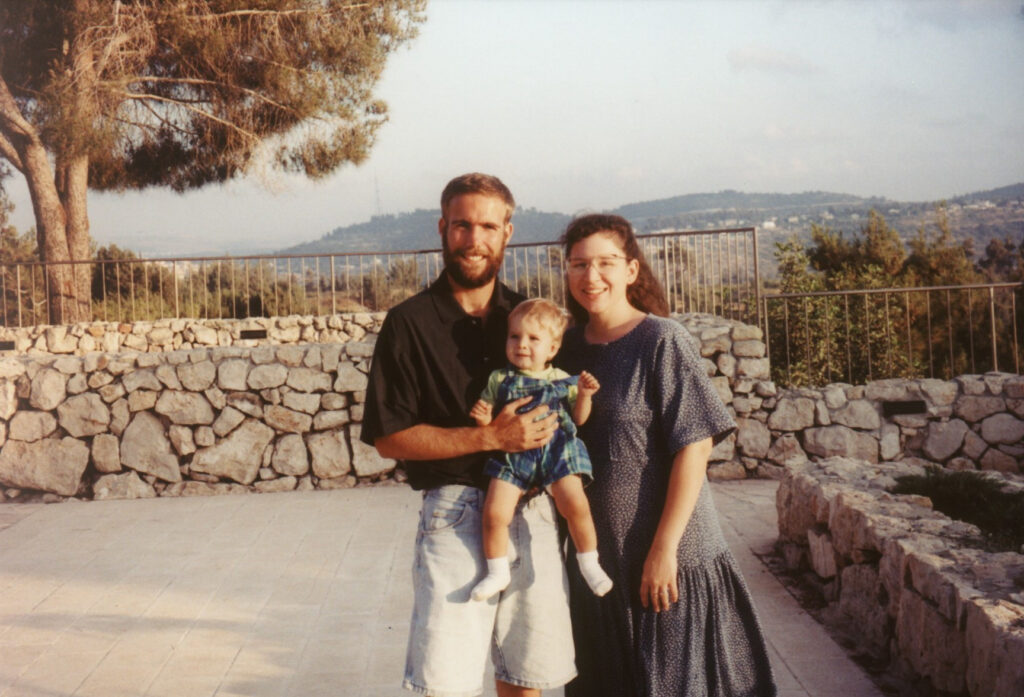
Todd, Kelli, and their oldest son Luke at Yad HaShmonah, the home of IBEX, in 1998.
This desire became the impetus for a new project. He called it the Pictorial Library of Bible Lands — a photo collection organized around key sites in Israel and other biblical lands. He released the first edition in 2000, with new volumes added as he traveled to places like Egypt, Turkey, and Greece on study trips.
At first, Bolen’s primary audience was seminary students who wanted high-quality, properly-labeled photos of biblical sites. Bolen’s education, position, and affinity for photography put him in the perfect position to fill this niche.
“There were other professional photographers,” Bolen says, “but I was the photographer for teachers.”
* * *
The Bolen family’s time at IBEX eventually came to an end in 2007, and they relocated to Texas so Todd could work on a doctorate at Dallas Theological Seminary. While there, he released a greatly expanded, 18-volume edition of the Pictorial Library through his website, BiblePlaces.com. In 2013, the Bolens moved back to California, and Todd began teaching at TMU’s main campus.
Coming back to teaching, Bolen says, was like starting fresh. But in another sense, he carried Israel with him to Santa Clarita.
“I brought in my knowledge of geography and archaeology,” he says. “People ask me, ‘Do you miss Israel?’ And of course I do. But in another way, I’m still there. In my mind, I can stand at any of these sites, partly because I’ve been to them so many times.”
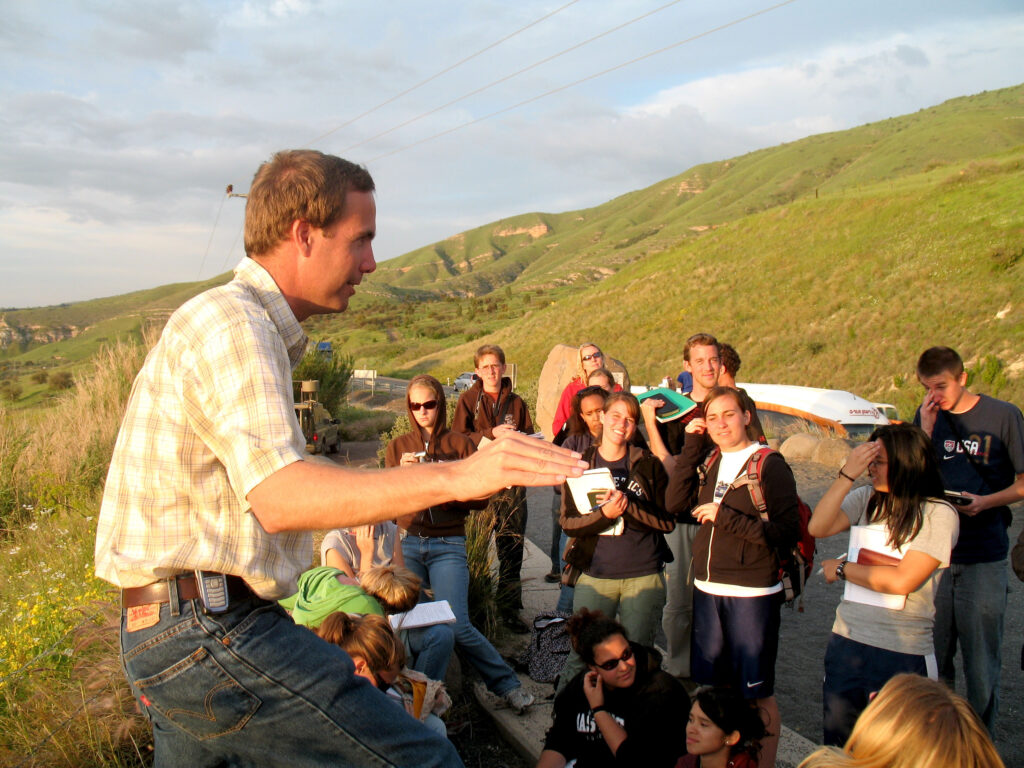
Bolen taught at IBEX from 1996 to 2007. He’s shown here during his final year in Israel with a group of TMU students at Kursi, near the shore of the Sea of Galilee.
And a large part of how Bolen shares this with his students is through the photos he brings to class.
“I can’t bring IBEX to Santa Clarita — though I can try to convince my students to go,” Bolen says. “But I can give them a taste of the land. I can show them pictures. Real pictures of real places. I don’t have an apologetic purpose, but it accomplishes an apologetic objective when students see photo after photo of places throughout the semester and are impressed by the reality of what Scripture says happened there.”
Julia Hildebrandt, a junior biblical counseling major, took New Testament I and II with Bolen and has experienced this firsthand.
“Now, every time I read the Epistles, I remember the pictures he showed us,” Hildebrandt says. “They definitely made it come to life. It’s the next best thing to being there.”
As the focus of Bolen’s teaching shifted toward individual books of the Bible, the direction of his BiblePlaces projects also shifted.
“I thought that it would be really neat to organize photos by biblical reference,” Bolen says. “So instead of grouping photos by place, you would pull together all of the photos related to Mark 1, and then Mark 2, and so on.”
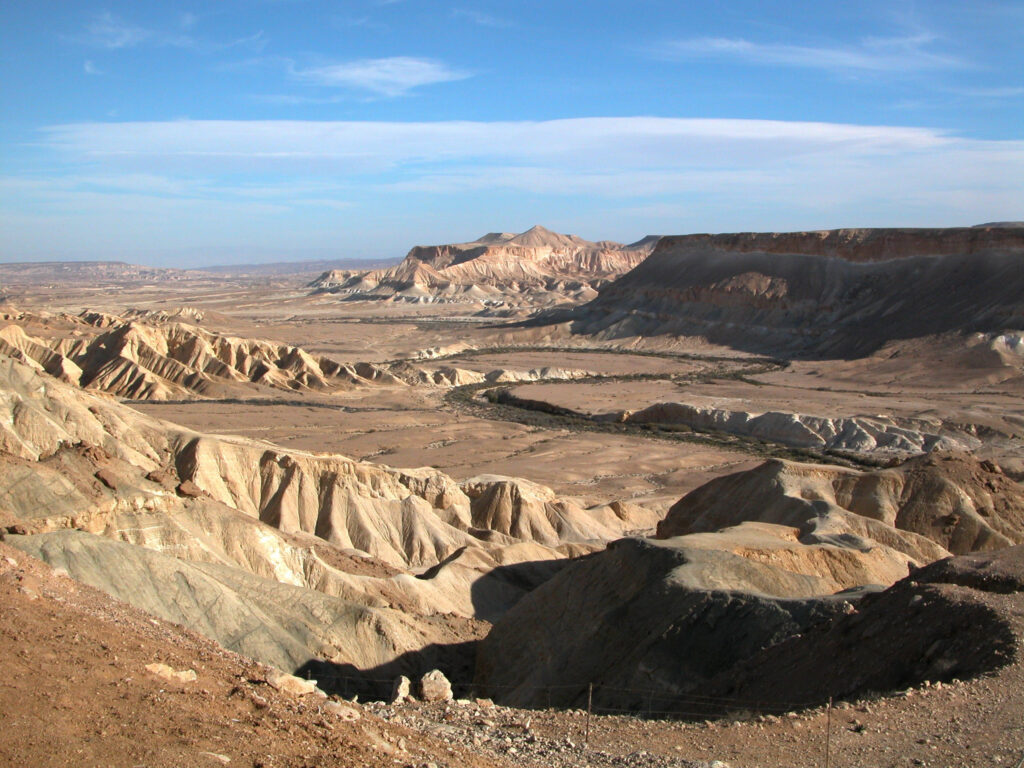
During his years in Israel, Bolen had opportunities to photograph nearly every corner of the country. Shown here is Nahal Zin, the southern border of the Promised Land.
The scope of the idea was intimidating — much larger than any one person could manage alone. But a team of people soon formed around it, and work began on the Photo Companion to the Bible (PCB). The PCB compiles photos of archaeological sites and museum artifacts, as well as historical and public domain images, to illustrate Scripture chapter by chapter, verse by verse, alongside explanatory notes.
“The goal was to pull all that together into an easily accessible collection that teachers can just grab and use,” Bolen says. And as it turned out, this resonated with his audience. Nowadays, he frequently gets emails from people who use the PCB every week in their teaching.
One of the PCB’s most passionate users is Dr. Jason Beals, a fellow professor in TMU’s School of Biblical Studies. Like Bolen, Beals wants people to experience Israel for themselves. “But the next best thing is to use this resource,” he says.
“I use his resources in every class I can. They help me as much as my students, because I’m a visual person,” Beals says. “And also, they aren’t just pictures. There’s a lot of information embedded in the notes. So the resources are great for people who just want to study the Bible and go a little deeper for themselves. There’s a lot of great insights.”
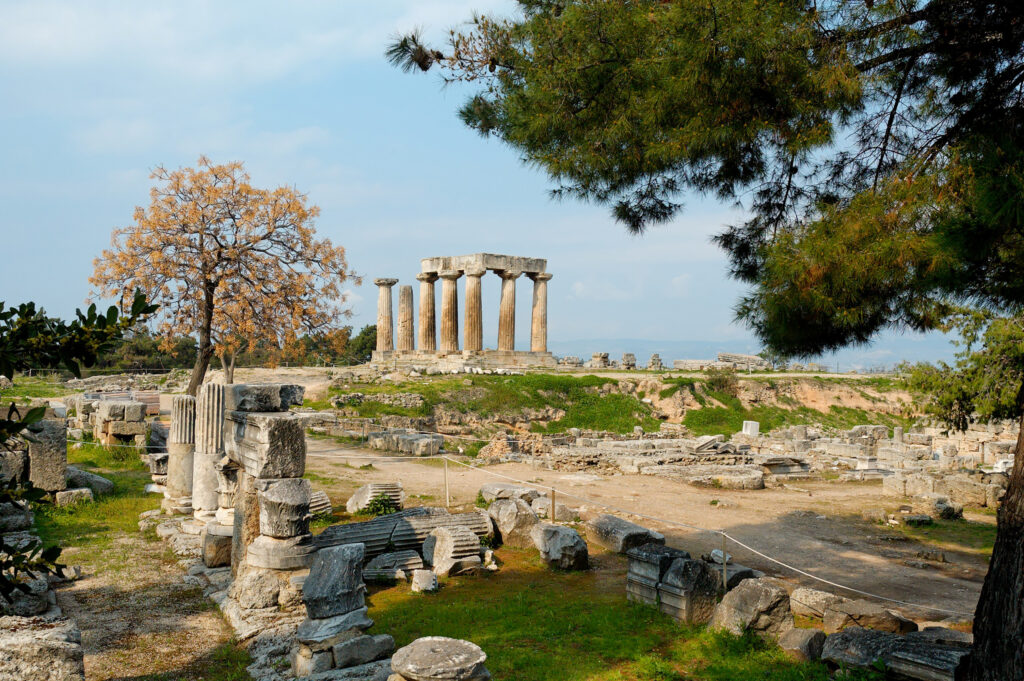
One of Bolen’s many photos of Corinth, with the Temple of Apollo prominent in the background.
For example, Beals remembers being struck by photos of the city of Corinth, including views of how close its temples were to its marketplace — a vivid illustration of why meat sacrificed to idols was such a pressing issue for the Corinthian church.
“Our hermeneutic is a historical grammatical hermeneutic,” Beals says. “And we spend a lot of time on the grammar, how the words fit and flow together. But sometimes we neglect, in our evangelical circles, the historical side. And so there is a part that’s lacking in a lot of people’s understanding of Scripture.”
On top of producing BiblePlaces resources, Bolen also licenses his photos for use in the publishing world. Over the years, he has licensed his photos for use in more than 1,000 books, atlases, study Bibles and other materials. His photos show up in all sorts of interesting places.
In his office, Bolen has a shelf of Bible translations.
“Those Bibles are the first Bibles produced for their respective languages,” Bolen says. “And they have my photos in them. I just have a policy that translators can use my photos for free.”
For each of those language groups, their entire culture’s first glimpse of Israel and of the biblical world likely comes through Bolen’s lens.
Bolen doesn’t take that opportunity — or the path that led him here — for granted.
“There’s a very real sense in which every piece of this story is that of God’s faithfulness,” Bolen says. “Every action or decision or opportunity came from Him.”

The Master’s University and Seminary admit students of any race, color, national and ethnic origin to all the rights, privileges, programs, and activities generally accorded or made available to students at the school. It does not discriminate on the basis of race, color, national and ethnic origin in the administration of its educational policies, admissions policies, scholarship and loan programs, and athletic and other school-administered programs.
21726 Placerita Canyon Road
Santa Clarita, CA 91321
1-800-568-6248
© 2025 The Master’s University Privacy Policy Copyright Info
| Cookie | Duration | Description |
|---|---|---|
| cookielawinfo-checkbox-analytics | 11 months | This cookie is set by GDPR Cookie Consent plugin. The cookie is used to store the user consent for the cookies in the category "Analytics". |
| cookielawinfo-checkbox-functional | 11 months | The cookie is set by GDPR cookie consent to record the user consent for the cookies in the category "Functional". |
| cookielawinfo-checkbox-necessary | 11 months | This cookie is set by GDPR Cookie Consent plugin. The cookies is used to store the user consent for the cookies in the category "Necessary". |
| cookielawinfo-checkbox-others | 11 months | This cookie is set by GDPR Cookie Consent plugin. The cookie is used to store the user consent for the cookies in the category "Other. |
| cookielawinfo-checkbox-performance | 11 months | This cookie is set by GDPR Cookie Consent plugin. The cookie is used to store the user consent for the cookies in the category "Performance". |
| viewed_cookie_policy | 11 months | The cookie is set by the GDPR Cookie Consent plugin and is used to store whether or not user has consented to the use of cookies. It does not store any personal data. |